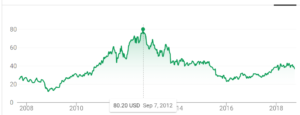
New Teradata Focuses on Answers, Not Analytics

Teradata shook up its 39-year-old business this week with a new logo, a new global headquarters, a new suite of software, and a promise to deliver “answers” to customers, not more analytics.
Analytics, it seems, is no longer the short answer to the hard question of how we should make sense of data.
“Stop buying analytics,” Teradata proclaims. “It’s time to invest in answers. With all of the investment being made, there’s one question no one seems to be asking: When do we stop buying into partial solutions that overpromise and underdeliver? The answer to that question is ‘now.'”
The new campaign promises to deliver a new tone and tenor for Teradata, whose massively parallel processing (MPP) analytic database was considered the gold standard in the field before the big data boom began some 10 years ago. Over the past few years, however, the company has been struggling to regain its footing amid a surge in diversity of different analytic approaches.
In particular, the rise of Hadoop analytics, where hundreds or thousands of cheap X86 nodes are strung together in parallel to crunch big data sets using SQL, has done its share to take a bite out of Teradata’s revenues, which have decreased steadily from $2.7 billion in fiscal 2014 to $2.14 billion in fiscal 2017.

The new Teradata touched a nerve with its portrayal of a dystopian data hellscape in a video on its homepage
Teradata has claimed – rightly – that building an analytic database is tough, time-consuming work, and that customers shouldn’t expect Hadoop to deliver the performance of a time-tested database like Teradata’s. But that hasn’t stopped plenty from trying.
The company has taken several steps to bolster its credentials in the big data era, including acquiring Aster Data, which had developed Hadoop-based analytics technology and a graph database, in addition to Think Big Analytics, a respected big data consulting firm. In 2014, Teradata acquired Hadapt, which employed the folks who built Apache Presto, the promising SQL-on-Hadoop engine, but it later spun the unit out as an independent company called Starburst in 2017.
Now Teradata is taking another step in redefining its business model, which depends in part on presenting itself to customers as a knowledgeable purveyor of answers amid a surging sea of data. Check out the clever two-minute video on the company’s redesigned homepage for a humorous take on a dystopian data landscape and the hellish analytic struggles of today’s frustrated data professional.
“Uncovering valuable intelligence at scale has always been what we do, but now we’re taking our unique offering to new heights, unifying our positioning while making our software and consulting expertise available as-a-service, in the cloud, or on-premises,” said Victor Lund, Teradata CEO. “We’re doubling down on our ambitious direction and strategy that’s data-based, customer-centric and built on expertise. Today, we challenge the industry.”

CEO Victor Lund hopes to reinvigorate Teradata’s business, which peaked in 2012 in terms of stock value and 2014 in terms of revenue
The company is pointing its ire at big data foes, which Teradata claims increased technological complexity without delivering a commensurate increase in results. “[A]s the rate and intensity of data has grown, today’s market has become saturated with copycats and new entrants who have only served to add complexity and uncertainty for companies hungry to invest in answers – not more analytics,” the company says.
Teradata also announced yesterday its new flagship offering, dubbed Teradata Vantage, which seems to be the culmination of its full-stack “analytics platform” strategy it told Datanami about last year, where various analytic products and data science capabilities hang off its core MPP database, including: full and final integration with Aster into the EDW; connectors to Spark, TensorFlow, Hadoop, and S3; support for JSON and Avro file formats; integration with Python, R, and SAS environments; and hooks into Dataiku, KNIME, Juptyer, and R-Studio-based data science models.
Like the previous analytics platform strategy, Teradata Vantage will deploy on-premise, the cloud, or a hybrid mix of the two. “…[W]e are the only analytics company able to help our customers rise above the complexity, cost and inadequacy of today’s analytics landscape, finding answers to the toughest challenges – providing answers that will push the world forward,” declared Teradata COO Oliver Ratzesberger.
The 10,000-person company also announced that it has officially moved its headquarters from Dayton, Ohio, to San Diego, California, which has long been the location of Teradata Labs.
More details of Teradata’s new strategy will be shared next week at Analytics Universe 2018, the new name of its annual user conference that previously was called Partners. Teradata Analytics Universe 2018 is taking place next week in Las Vegas.
Related Items:
Teradata Climbs Up the Stack with ‘Analytics Platform’ Strategy
Teradata Bets Big on Presto for Hadoop SQL
Teradata Makes Data Warehouse More Hadoop-ish































